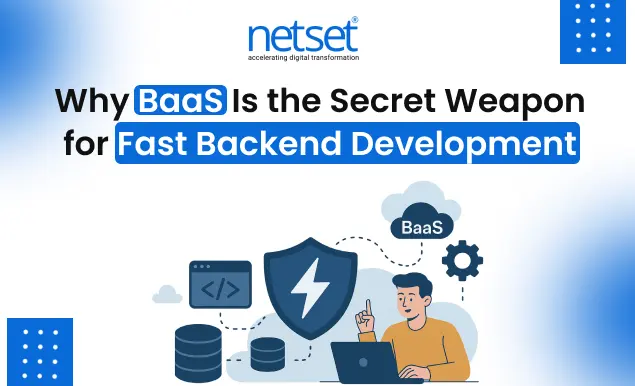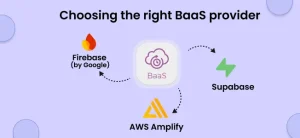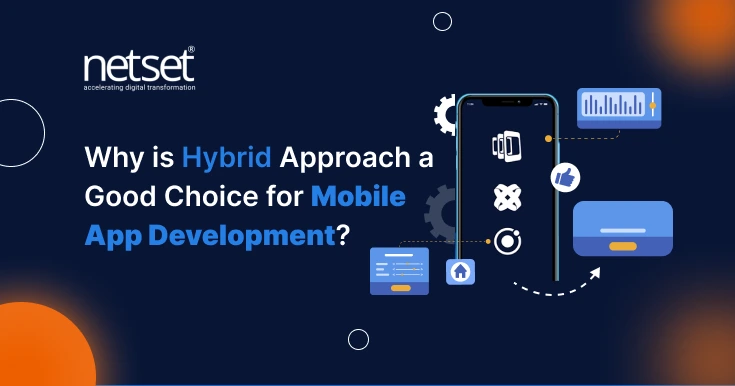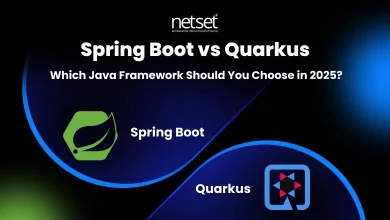Why BaaS Is the Secret Weapon for Fast Backend Development

Pause for a minute and just think how fast the world is moving in terms of technology. From businesses and startups to developers, they all are under pressure to launch products that quickly scale and stay within the budget.
In the hunt for a solution to achieve pace in the technical world, Backend as a Service (BaaS) seems very promising because building the backend takes most of the time and cost when it comes to digital product development. A lot of businesses do not know about BaaS because at most of the places there are only flashy front-end tools.
But do not worry, you are at the right place and are about to discover everything about this secret weapon, the BaaS backend.
Understanding Backend as a Service (BaaS) in simple language
At the core, imagine building a mobile app that needs user login, data syncing, and analytics, which are quite complex requirements and demand resources. If you go with traditional development practice, you have to hire a team with dedicated expertise in server logic, database management, API writing, and handling the complete deployment part. But a BaaS backend does it for you without requiring the huge budget to hire and employ resources.
So, Backend as a Service, or what we call BaaS, is a platform that runs on the cloud and lets developers utilize prewritten backend functionalities. This includes everything mentioned below and, of course, more than that:
- Authentication
- database management
- file storage
- APIs
- Push notifications
- Analytics
This is like a plug-and-play approach that immediately cuts the cost of development time, where you only have to hire Backend (BAAS) Developers and employ other team members on front-end features.
Why does speed matter in backend development?
You just learned about BaaS, but you must be wondering why the market is asking for businesses to achieve speedy development. The thing is that there are so many digital products launched and if we take the example of the Google Play Store alone, there were more than 2 million mobile apps on the Play Store in 2024 alone.
You can imagine the number of apps releasing regularly, making the competition stiffer than before. For creating maximum probability of success, it becomes important for your business to launch the app as fast as possible before the competition outlasts you.
So, to save time in creating back-end logics, companies go with back-end as a service and win the race (BaaS).
How BaaS actually toggle the scalable architecture on?
There are developers who might think that BaaS is only good for prototypes or MVPs, but that is a complete myth. If you ask leading backend as a service providers, they will tell you about its benefits related to scalability, automatic load balancing, data redundancy, and so much more, which we will discuss in the later sections.
This makes it an ideal choice for MVPs as well as production-grade apps. Take the example of AWS Amplify, Firebase, or Supabase; each one of them gives you scalable backend systems that handle spikes in traffic without manual interfere. Such scalability is important for startups that are expecting user growth but are not equipped with heavy budgets to manage the servers manually.
Key benefits that BaaS delivers efficiently
When you use Backend as a Service BaaS solutions, your development team gets a lot of benefits, with some of the key ones mentioned below.
- Offloading the backend functions like database setup, user authentication, and file storage to a BaaS platform, the teams can save hundreds of manual hours in a project.
- Due to the flexible pay-as-you-go models on cloud-hosted backends, the teams can help their clients to make the project budget efficient because the need to manage physical servers’ cuts.
- Many backend-as-a-service providers give end-to-end encryption, compliance protection, and the best security configuration, which again is something that demands so much time to create manually.
- The job of server maintenance, software patches, and uptime monitoring becomes the responsibility of BaaS, which again frees up developers for some other productive work for the client’s business.
Some product types where BaaS can help you shine
Now, up till this point, you must be interested to know about the types of apps that can easily attain success with BaaS. To start with, you can easily speed up the backend integration for all the mobile apps where a lot of cross-platform apps that work on real-time data sync and user management are taking benefit from the same.
Other than mobile apps, you can easily take advantage of BaaS in IoT apps because APIs and cloud functions are readily available, something that these apps demand a lot for efficient working. Not only that, BaaS is also powering SaaS companies to launch faster and scale their backend operations without huge DevOps investments.
For example, if you are building a fitness app using a BaaS backend, it can take care of features like user logins, push notifications, and data storage with minimum custom backend code.
Choosing the right BaaS provider
 Just like everywhere else, the competition is strong when it comes to picking the right backend as a service provider. Before we talk about the suggestions, be sure to be clear about the requirements of your app, development stack, and future growth plans. Then you are ready to pick from some popular BaaS providers given below:
Just like everywhere else, the competition is strong when it comes to picking the right backend as a service provider. Before we talk about the suggestions, be sure to be clear about the requirements of your app, development stack, and future growth plans. Then you are ready to pick from some popular BaaS providers given below:
- Firebase (by Google): ideal for real-time apps with database, hosting, authentication, and analytics (an all-in-one package).
- AWS Amplify: It is a part of Amazon Web Services, which packs really strong backend capabilities if your app is built on React or GraphQL.
- Supabase: for anyone looking for an open-source alternative to the above two, they can go with this SQL-friendly stack.
When not to use BaaS?
Although BaaS packs so many benefits, and it might be right for most of the businesses, it might not be ideal for every project. You can avoid BaaS if your project has:
- Complex or custom logic
- Data Privacy Concerns
- Full control and customization requirements
- Avoidance of vendor lock-in (not restricting yourself to a service provider)
How can NetSet Software help in BaaS management as well as custom backend development?
We understand that every business has unique backend needs, so whether you want to make use of BaaS backend for a fast MVP development and then go with a custom backend for the complex final development, then we can be your ideal choice. Our experts will guide you on what will work best for you in your budget, added with the front-end development consultation.
The best product can be a mix of BaaS as well as custom backend development, and we can help in achieving this in the smoothest form so that you can lead the market.
It’s a Wrap!
This is the modern world where speed is everything, but complexity is the hurdle that slows down businesses from launching apps fast. BaaS backend comes in as a game-changing approach with the exact solution that enables fast development by automating the complex processes.
While backend as a service might not fit every project, it is a solid choice for most businesses. And why not take advantage of both worlds, BaaS as well as custom development?
However, you will require a reliable and experienced backend app development company that can guide you on the project and help with your product development journey.
FAQs
Is BaaS good for complex and enterprise-level apps, or is it only good for MVPs?
Due to the speed and simplicity that BaaS packs, it is ideal for MVPs as well as startups. Although an enterprise-level app can also use it, you can hire a reliable BaaS expert who can help you achieve the same.
What if I outgrow my BaaS provider? Can I move to a custom backend later?
Yes, you can easily migrate to a custom backend, but there is a catch. The catch is that you have to partner with a company like NetSet Software, who are experts in planning the architecture and can help you migrate smoothly from BaaS to a custom backend.
How do I choose the right BaaS provider for my project?
Be sure to understand your project type, tech stack, budget, and future goals, or the best way will be to take guidance from expert BaaS consultants like NetSet Software.
Can I combine BaaS with custom backend features?
Well, it depends upon your project, so you have to evaluate it first and check if the BaaS provider allows you third-party integrations. Then only you will be able to integrate your custom features.
What is the difference between using BaaS and hiring a backend developer?
Imagine that you are using a storage device to save your personal file, versus you opting for a cloud service taking care of that. BaaS saves time but might limit you if your requirements are complex, whereas backend developers will shape your product just as you want.




